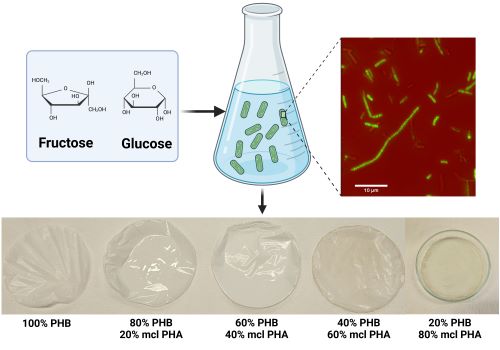Researchers have transformed food waste sugars into natural plastic films that could one day replace petroleum-based packaging, offering compostable alternatives to commonly used plastics for food and agricultural films like silage wrap.
With global plastic production exceeding 400 million tonnes annually, a Monash University study highlights the potential of a new type of biodegradable plastic by converting food waste sugars into polyhydroxyalkanoates (PHA) biopolymers.
By selecting different bacterial strains and blending their polymers, the researchers produced films that behave like conventional plastics and can be molded into other shapes or solids.
The study, led by Edward Attenborough and Dr Leonie van 't Hag from the Department of Chemical and Biological Engineering, provides a framework for designing bioplastics for temperature-sensitive packaging, medical films and other products, addressing the global challenge of single-use plastic waste.
The research teams fed two soil-dwelling bacteria – Cupriavidus necator and Pseudomonas putida – a carefully balanced "diet" of sugars with the right blend of salts, nutrients and trace elements.
Once the microbes fattened up, they began stockpiling natural plastic inside their cells. The scientists then "milked" these plastics out using solvents, cast them into ultrathin films about 20 microns thick and tested their stretchiness, strength and melting behaviour.
"This research demonstrates how food waste can be transformed into sustainable, compostable ultrathin films with tunable properties. The versatility of PHAs means we can reimagine materials we rely on every day without the environmental cost of conventional plastics," Mr Attenborough said.
"By tailoring these natural plastics for different uses, we're opening the door to sustainable alternatives in packaging, especially where they can be composted along with food or agricultural waste."
By comparing the stiff plastic made by C. necator with the softer, more flexible version from P. putida, the study demonstrates how blending the two can tune film properties like crystallinity and melting point, while maintaining strength and flexibility.
The team is collaborating with industry partners including Enzide and Great Wrap through the ARC RECARB and VAP hubs to develop biodegradable packaging and medical solutions with potential commercial applications.
The study builds on earlier work which demonstrated the potential of these materials as sustainable drug delivery systems. Read the research paper: https://doi.org/10.1186/s12934-025-02833-7







